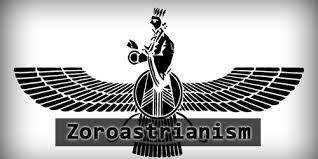Zoroastrianism Introduction
Zoroastrianism is one of the world’s oldest religions, originating in ancient Persia (modern-day Iran) around the 6th century BCE. It was founded by the prophet Zarathustra (Zoroaster in Greek), who is considered its primary religious figure. This religion has had a profound influence on later Abrahamic religions and continues to be practiced by a small but dedicated global community.
Historical Context and Origins
Zoroastrianism emerged in a time of cultural and religious ferment in the ancient Near East. Zarathustra is believed to have lived during the 6th century BCE, though the exact dates are debated. He received revelations from Ahura Mazda, the supreme deity in Zoroastrianism, which formed the basis of the religion. Initially, it spread in Persia and later influenced the Persian Empire.
Core Beliefs of Zoroastrianism
1. Dualism
Central to Zoroastrianism is the belief in dualism, a cosmic struggle between the forces of good and evil. Ahura Mazda represents goodness, truth, and order, while Angra Mainyu (Ahriman) embodies falsehood, chaos, and evil. This dualistic worldview permeates Zoroastrian ethics and cosmology.
2. Ethical Principles
Zoroastrianism emphasizes ethical conduct and personal responsibility. Followers are encouraged to choose the path of truth (asha) over falsehood (druj) in their thoughts, words, and actions. This ethical dualism guides believers in striving for righteousness and resisting evil.
3. Role of Fire and Rituals
Fire is a sacred symbol in Zoroastrianism, representing purity and the presence of Ahura Mazda. Fire temples are central to worship, where priests maintain eternal flames. Ritual purity and cleanliness are emphasized in daily life, reflecting the religion’s emphasis on spiritual and physical cleanliness.
Scriptures and Texts
The primary scripture of Zoroastrianism is the Avesta, a collection of sacred texts composed in ancient Avestan language. It includes hymns (Gathas) attributed to Zarathustra himself, prayers, rituals, and philosophical treatises. The Avesta underwent compilation and redaction over centuries, preserving Zoroastrian teachings and traditions.
Development and Influence
1. Influence on Other Religions
Zoroastrianism influenced several major religions, particularly Judaism, Christianity, and Islam. Concepts such as angels, demons, judgment after death, and the struggle between good and evil are evident in later Abrahamic religions, demonstrating Zoroastrianism’s enduring impact.
2. Historical Development
Zoroastrianism thrived during the Achaemenid Empire (550-330 BCE) and became the state religion under the Sassanian Empire (224-651 CE). However, Islamic conquests in the 7th century led to the decline of Zoroastrianism in Persia, with many adherents migrating to India (where they are known as Parsis).
Contemporary Practices and Challenges
1. Parsi Community
Today, the majority of Zoroastrians are found in India, where they are known as Parsis. They have maintained distinct cultural and religious practices while contributing significantly to Indian society.
2. Global Diaspora
Zoroastrian communities exist in various countries worldwide, including the United States, Canada, and the United Kingdom. Efforts are ongoing to preserve Zoroastrian traditions and adapt to modern challenges.
3. Challenges and Preservation
Zoroastrianism faces challenges such as declining population numbers, interfaith marriages, and maintaining traditional practices in a globalized world. Efforts to document and preserve Zoroastrian heritage are critical for the religion’s continuity.
Conclusion
Zoroastrianism continues to endure as one of the world’s oldest monotheistic religions, characterized by its dualistic worldview, emphasis on ethical conduct, and reverence for Ahura Mazda. Despite its small global presence, Zoroastrianism remains significant for its historical influence and distinct cultural contributions. Preserving its teachings and traditions is vital for future generations to understand its profound impact on religious thought and practice.
